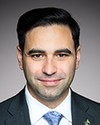Thank you, Mr. Chair.
Thank you for the invitation to be with the committee here today with my colleagues and to address an issue that is of a critical nature in our department's service and response to our veterans.
We very much appreciate the effort that went into the Auditor General's report about the processing of disability benefits for veterans, and the recommendations that came out of it. We have, as the Auditor General has just indicated, accepted all the recommendations of this report, and we are making significant improvements to address each of them.
In fact, even before the report was released, Veterans Affairs had already been working on the very issues the report outlines with respect to processing times for our veterans.
Before I share further improvements we've made, it is important to explain that veteran disability benefits are a very unique aspect compared to other government benefits. Every veteran's situation is individual. We must review every application and assess each of them carefully, to ensure the right supports are provided to our veterans.
Since the audit period ended, in September 2021, the department has made some real, tangible progress, most notably reducing the backlog by 41%. The backlog is the number of applications over the service standard. Our service standard is 16 weeks, 80% of the time. As of September 29, 2022, 9,687 applications were over the service standard of the total 30,725 pending.
We know that these numbers are still too high, but it's a significant improvement from where they used to be. Provided that intake levels remain consistent, the department expects that by June 2023, we will meet the service standard and will have cut the number of applications waiting longer than our service standard to 5,000.
As of April 1, 2022, the department updated how it defines the processing times for the purpose of its service standard. Aligned with recommendation two, the department modified the end date calculation to include the date when a payment was actually received by the veteran, now part of our 16 weeks. Therefore, all turnaround times and service standard results for disability benefits reported for the fiscal year 2022-23 will represent the time between when we receive a complete application and when a payment is made to the veteran.
So far this fiscal year, 56% of disability benefits first applications have been completed within the service standard, compared to 46% in the last fiscal year. Again, our objective is to get to 80% by June 2023, assuming intake remains stable.
Regarding RCMP formal costing and funding, Veterans Affairs Canada and the RCMP are working to create better processes for forecasting how much it would cost our department to administer disability benefits for RCMP clients.
With respect to data weaknesses, we know we have to improve. We are already under way to better track the impact of our wait times reduction initiatives to support disability benefits processing. Importantly, as the Auditor General has indicated, the department has also made progress in addressing the turnaround times for female and francophone veterans. From the first quarter of 2019-20, the average turnaround time was 55 weeks. By the end of the fourth quarter of 2021-22, the turnaround time was reduced to 43.5 weeks, an improvement of 11.5 weeks.
Since establishing a dedicated processing team for applications of female veterans last year, the average turnaround time improved from 40 weeks to 28 weeks as of September 2022. We have closed the gap between processing times for male and female veterans, and those are now at an equivalent.
Finally, we're committed to exploring options for long-term resources to help us make more timely decisions and deliver on our service standard into the future. Our efforts remain focused on maintaining the resourcing we have in place, so we can respond to our veteran clients as quickly as possible, continue our progress, and achieve our service standard for all veterans.
There should be no question that our department cares deeply and respects deeply the veterans of this country. We want to ensure they and their families receive the assistance they require through us.
Thank you very much.




